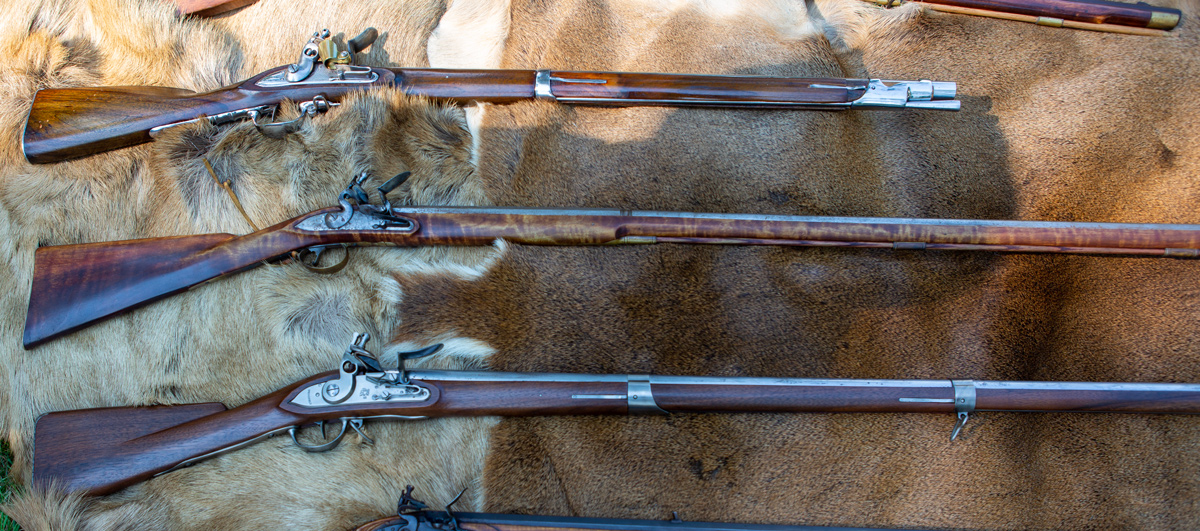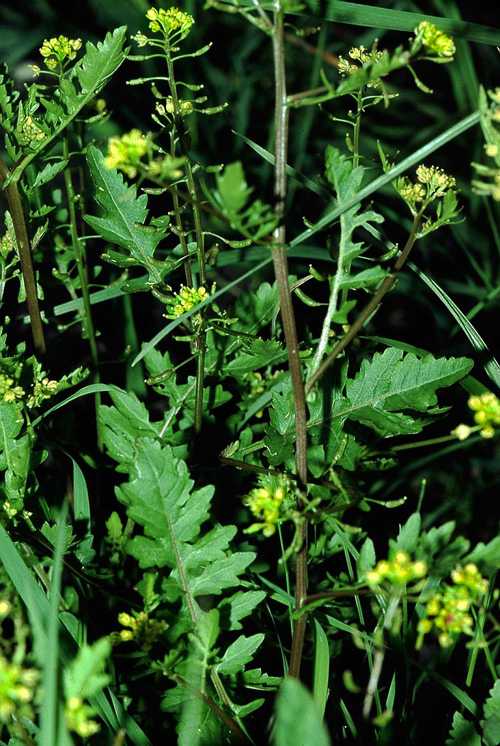As the expedition travels up the Missouri, they meet two parties who had been trading with the Omaha and Osage. Lewis collects three more plant specimens including a cress that they use to make salad. At evening camp near the mouth of the Gasconade River in present Missouri, arms and ammunition are inspected.
Omaha Traders
by Yellowstone Public Radio[1]Originally aired weekdays by Yellowstone Public Radio during the Bicentennial observance of 2003-2006. Narrated by Hal Hansen. Scripts by Whit Hansen and Ed Jacobson. Produced by Leni Holliman. © … Continue reading
Blunderbuss, Rifle, and Musket
© 2014 by Kristopher K. Townsend. Permission to use granted under the Creative Commons Attribution-Share Alike 4.0 International license.
Mouth of the Gasconade
arrived at the mouth of the Gasganade Rivber at 5 ock P. m on the South Side encamped on an Island oppeset the mouth of the River which is a handsom Situation high hiles on the Left Side the Bottom is of Good quallity &c. armes and ammunition Inspected—
—Charles Floyd
Fur Traders
as we were Setting out this morning two Canoos loaded with Bever elk Deer Skins & Buffalow Robes, from the Mahars [Omaha] nation
at about 10 oClock 4 Cajaux [cajeux] or rafts loaded with furs and peltres came too one from the Paunees [Pawnees], the other from Grand Osage
—William Clark
Lost Specimen No. 5
No. 5. was taken on the 27th of May 1804 near the mouth of the Gasconade; it is a species of cress which grows very abundantly alonge the river beach in many places; my men make use of it and find it a very pleasant wholsome sallad.—
—Meriwether Lewis
Moulton identifies this lost specimen, received by John Vaughn in 1805, as Rorippa, sp.[2]Gary E. Moulton, ed. Journals, “Fort Mandan Miscellany”, vol 3:452, 466.
Lost Specimen No. 6
No.6. Was taken on the 27th of may 1804 near the mouth of the Gasconade; it is a species of rape or kail, it grows on the beach of the river, when young my men used it a boiled green and found healthy and pleasent.——
—Meriwether Lewis
There are no native species of kale or rape in this area and this lost specimen, received by John Vaughn in 1805 , remains unidentified.[3]Ibid., 452–453, 466. See also The Donation Book.
Lost Specimen No. 7
No. 7. was found on the 27th of May 1804 near the water side about 10 miles below the mouth of the Gasconade, it rises to the hight of three feet and puts forth many large suculent branched stalks from the same root, this plant is a stranger to me.—
—Meriwether Lewis
This lost specimen, received by John Vaughn in 1805, remains unidentified.[4]Ibid., 453, 467.
Weather Diary
servisburries or wild Courants, ripe and abundant
—Meriwether Lewis
Notes
| ↑1 | Originally aired weekdays by Yellowstone Public Radio during the Bicentennial observance of 2003-2006. Narrated by Hal Hansen. Scripts by Whit Hansen and Ed Jacobson. Produced by Leni Holliman. © 2003 by Yellowstone Public Radio. |
|---|---|
| ↑2 | Gary E. Moulton, ed. Journals, “Fort Mandan Miscellany”, vol 3:452, 466. |
| ↑3 | Ibid., 452–453, 466. |
| ↑4 | Ibid., 453, 467. |


